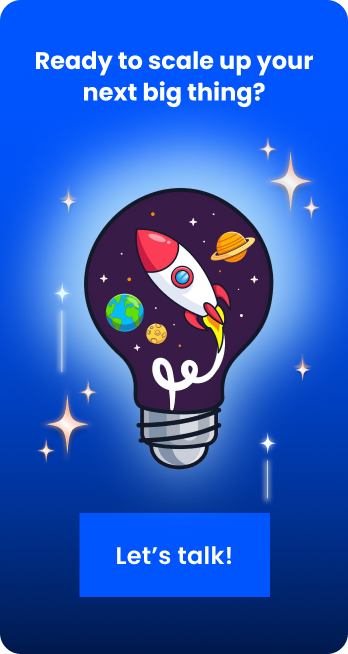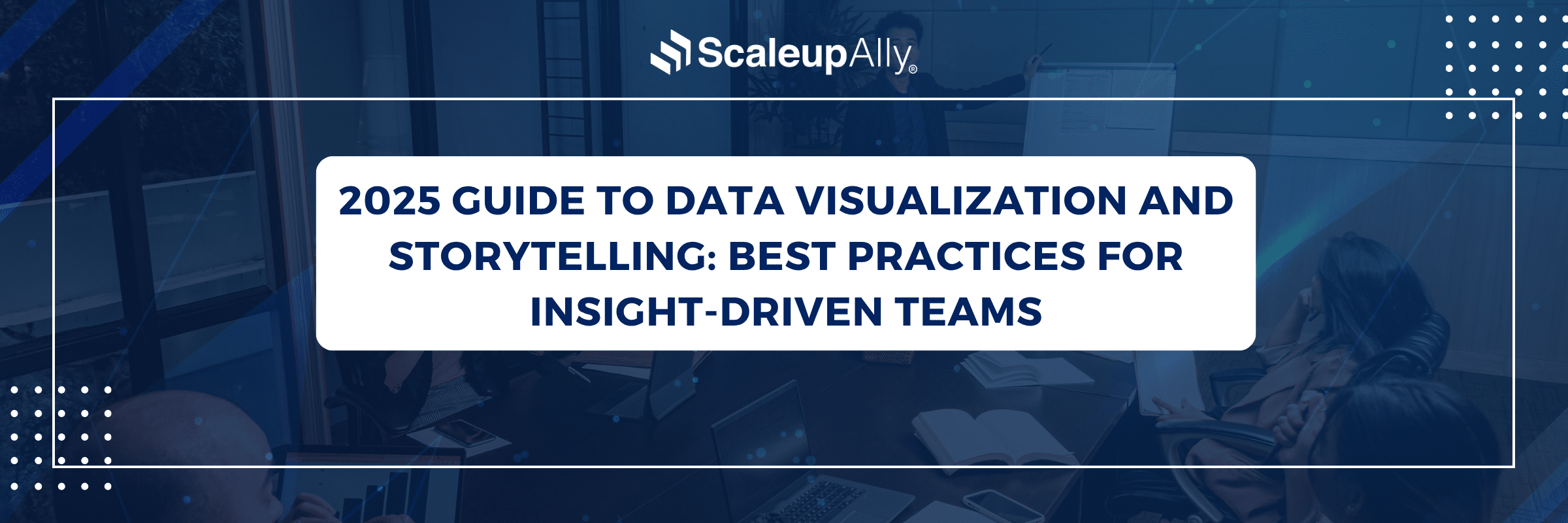
2025 Guide to Data Visualization and Storytelling: Best Practices for Insight-Driven Teams
Tarsem Singh | July 31, 2025 , 11 min read
Table Of Content
Numbers alone won’t convince your CEO to pivot strategy or help your team understand customer behavior.
Compelling visuals with narrative would. Data visualization alone shows what happened. Combine it with storytelling, and it explains why it matters.
Proactive teams master both. They turn complex datasets into clear decisions and also transform quarterly reports into strategic roadmaps.
This is your guide to that transformation.
Key Takeaways
- Visualization shows what happened; storytelling explains why it matters and what to do about it.
- The best data stories start with clear business problems and end with specific actions, using only the data points that advance the core message.
- Successful examples like Spotify Wrapped and Apple’s presentations convert technical data into something simple that audiences can relate to and remember.
- The most persuasive data stories follow progressive insight revelation and actionable conclusions rather than exploratory data dumps.
What Is Data Storytelling?
- What Is Data Storytelling?
- Why Storytelling Matters in Data Communication
- Core Elements of Data Storytelling
- Data Storytelling Vs Data Visualisation: Key Differences
- Tools for Data Visualization and Storytelling
- Real-World Examples of Data Storytelling
- Best Practices for Effective Data Storytelling
- Conclusion
- Frequently Asked Questions
Data storytelling is the practice of taking data insights and creating a compelling story out of them. Them aim it to make it memorable and drive some form of action. When done right, your audience remembers the story long after they’ve forgotten the numbers.
Why Storytelling Matters in Data Communication
No matter how compelling the figures are, they don’t persuade. Stories persuade better. When you combine data storytelling and visualization, you tap into how humans naturally think and remember. We will show you an example.
When you present a dashboard showing customer churn rates across different segments. Your stakeholders nod politely, and maybe ask a few questions, then move on. Three weeks later, they’ve most likely forgotten the specifics.
Now imagine telling the story differently. You start with Sarah, a typical customer who loved your product for two years, then gradually became frustrated with slow support responses. You show her journey through data – support ticket resolution times, satisfaction scores, renewal dates, etc. You connect her experience to other patterns that are affecting 23% of your customer base.
Which version do you think drives action?
Stories create emotional connections to data. They help people see themselves in the numbers. When executives understand that slow support loses customers like Sarah, they suddenly care about fixing the problem.
Data storytelling also fights information overload. The average executive sees hundreds of charts weekly. But a well-narrated data story gives context and meaning to the numbers.
Stories make data sticky. They transform passive consumers of information into active decision-makers who remember why the data matters.
Core Elements of Data Storytelling
Most data presentations fail because they dump numbers without purpose. Below are the core elements of data storytelling:
1. Context
Start here or lose your audience immediately. Context means explaining why anyone should care about your numbers right now. Not next quarter, not when budget reviews happen, but today.
Say you’re showing customer churn data. Don’t just throw up a chart. Explain that three major competitors launched aggressive pricing last month. Mention that support tickets increased 40% after your latest product update.
2. Data
Your evidence needs to be bulletproof. Pick data that directly proves your point. If you’re pushing for mobile app development, show mobile conversion rates, not total website traffic. Stay focused.
Unclean data kills credibility faster than anything else. One obvious error makes people question everything you’re showing them. Check your work twice. Have someone else verify key numbers.
Be ready to defend your methodology. Where did these numbers come from? How did you calculate that percentage? What assumptions did you make?
3. Visualization
Charts are communication tools. Choose the right chart for your message. Line graphs show change over time. Bar charts compare different groups. Scatter plots reveal relationships. So don’t force your data into the wrong visual format.
Every color, line, and label should serve a purpose. If removing something doesn’t hurt comprehension, remove it. Make your main point obvious. Use color to highlight what matters, and size elements according to importance.
4. Narrative
Hook them early with something surprising or concerning. “Our top customers are leaving faster than we’re replacing them.” Now you have attention.
Follow a logical path from problem to insight to solution. Don’t jump around. Each point should naturally lead to the next.
End with specific actions. “Reduce mobile checkout steps from seven to three,” beats “improve mobile experience.”
Data Storytelling Vs Data Visualisation: Key Differences
People throw these terms around like they mean the same thing. But they don’t.
What is the difference between data visualization and data storytelling? The answer is simple. One shows, the other convinces.
1. Visualization Displays. Storytelling Persuades.
- Data visualization is more like your translator. It turns your messy spreadsheets into charts that are visually understandable. Bar graphs show sales by region, line charts track website traffic over time, heatmaps reveal user behavior patterns, and so on… That’s all visualization does. It presents information without judgment or direction.
- Data storytelling on the other hand, picks up where visualization ends. It takes those same charts and builds a case. Why did sales drop in the Northeast? What caused that traffic spike in March? How can we fix the checkout abandonment problem? You get the big picture.
2. Audience Engagement
- Think of a dashboard full of charts. Users click around, explore trends, maybe spot something interesting. That’s visualization doing its job – enabling discovery.
- Now picture a presentation where you walk executives through three key findings from customer research. You show the same data, but you control what they see and when. You highlight the problems and suggest solutions. That’s storytelling.
3. Structure and Flow
- Visualization works in the moment. Someone opens your dashboard, finds what they need, and makes a decision.
- Storytelling builds over time. First you establish context. Then you reveal the problem. Finally, you present the solution. Each piece depends on what came before.
4. One Explores, One Explains
- Good visualization lets people ask their own questions. Users should quickly understand what they’re looking at and how to interact with it. The structure is often flexible, allowing multiple entry points and exploration paths.
- Storytelling answers specific questions you choose. You decide which insights matter most. You shape how people interpret the findings.
Both have their place. Dashboards help teams monitor performance. Stories help teams change course.
The magic happens when you combine them. Start with solid visualization. Then wrap the most important insights in compelling stories.
Tools for Data Visualization and Storytelling
Leaders need tools that work as hard as they do. Let’s explore a few:
1. Enterprise Powerhouses
Tableau dominates the visualization space for good reason. It handles massive datasets without breaking a sweat. But Tableau works wonders for exploration, not explanation. Your analysts will love building interactive dashboards.
Power BI integrates seamlessly with Microsoft’s ecosystem. If your team lives in Excel and Teams, this feels natural. The learning curve is gentler than Tableau, though the advanced features aren’t quite as robust.
2. Storytelling Tools
Flourish creates gorgeous, animated visualizations that tell stories naturally. Elections coverage, sports analytics, business trends – everything flows like a narrative.
The downside, however, is that it has limited data connectivity. You’ll spend time preparing data outside the platform.
Datawrapper focuses on simplicity. Journalists love it because charts look clean in any publication. Leaders appreciate how quickly they can turn numbers into compelling visuals for presentations.
3. All-in-One Solutions
Looker Studio (formerly Google Data Studio) connects directly to your data sources and creates shareable reports. Free, functional, but not fancy. It’s perfect for teams that need basic storytelling without budget constraints.
Qlik Sense offers associative analytics that reveal unexpected connections in your data. Great for discovery-driven storytelling where you’re not sure what the narrative will be.
4. Presentation-First Tools
PowerPoint and Google Slides seem basic, but they’re storytelling champions. Every executive knows how to use them. Every meeting room can display them. Use specialized tools to create visuals, then import them into presentation software for storytelling.
Real-World Examples of Data Storytelling
Here are some real-world companies that craft experiences with data storytelling.
1. Spotify Wrapped
Every December, millions of Spotify users look forward their Spotify Wrapped. And this is not because they don’t know what music they listen to, but it’s just how Spotify presents their listening data.
Spotify doesn’t dump a year’s worth of statistics on users. Instead, they create a journey. “Your year started with R&B, then in March, you discovered K-pop. By summer, you were obsessed with that one Taylor Swift song.”
They use personality-driven insights too. “You’re in the top 1% of fans for this obscure band” makes users feel special. People share these stories because they’re sharing pieces of themselves.
The business impact? Over 120 million users engage with Wrapped annually. It increases premium subscriptions and generates massive social media buzz. All from data people already knew about themselves.
2. Apple’s Product Launches
Apple’s presentation slides look during launch day looks very simple, except that they’re not. Every product announcement follows the same storytelling framework. Problem, solution, impact. But it’s how they present data.
Instead of saying “M4 chip has 28 billion transistors,” Apple shows what that means. “Edit 4K video while running 12 other apps without the fan turning on.” They translate technical achievements into user benefits.
They use clean typography, strategic white space, and precise data points to create the slides. No clutter or confusion. Just the story they want to tell.
The result? Apple’s presentations create desire, selling millions of products.
Best Practices for Effective Data Storytelling
The best data visualization and storytelling follows proven patterns.
1. Start With Your Ending
Know your conclusion before you touch any data. What decision needs to be made? What action should your audience take? What belief should change?
Work backwards from there. If you want executives to approve budget increases for mobile development, every chart should build toward that ask. If you’re proving customer satisfaction improved, every data point should support that narrative.
Don’t explore during your presentation. Explore beforehand. Present only insights that serve your core message.
2. Choose Data That Supports Your Story
More data doesn’t mean better storytelling. Often, it means worse.
Pick 3-5 key metrics that directly prove your point. Cut everything else, because quality beats quantity every time. One compelling chart that clearly demonstrates your point will outperform ten mediocre ones.
3. Design for Clarity, Not Beauty
Remove gridlines that don’t help readers understand values. Skip 3D effects that distort perception. Avoid pie charts with more than four segments. Use color strategically – one accent color to highlight key insights, gray for everything else.
Your audience should understand the main message within three seconds of seeing any visual. If they’re asking themselves, “what does this show?” then you’ve already lost them.
4. Tell Stories, Don’t Recite Statistics
Humans remember stories. They forget numbers. So instead of “Customer acquisition costs increased 23% quarter-over-quarter,” try “We’re paying nearly $2,500 more to acquire each customer than we were three months ago. That’s equivalent to giving away a MacBook Pro with every signup.”
Context makes data meaningful. Comparisons make it memorable. Analogies make it stick.
Conclusion
Your data has stories waiting to be told. Are you telling these stories effectively? Take the opportunity to transform your data communication. Contact us today. We are always open to helping you tell data stories that’ll drive the results you hope for.
Frequently Asked Questions
Q: What is data storytelling?
Data storytelling combines data, visuals, and narrative to communicate insights effectively that drive decisions using context and structure to make complex information memorable and actionable for audiences.
Q: How does storytelling enhance data visualization?
Storytelling adds context, emotion, and purpose to charts and graphs. While visualization shows patterns, storytelling explains why they matter, guides audience attention to key insights, and connects data to business outcomes and human experiences.
Q: What are the best tools for data storytelling?
Popular tools include Tableau and Power BI for complex analysis, Flourish for animated narratives, and PowerPoint for executive presentations.
Related Blogs
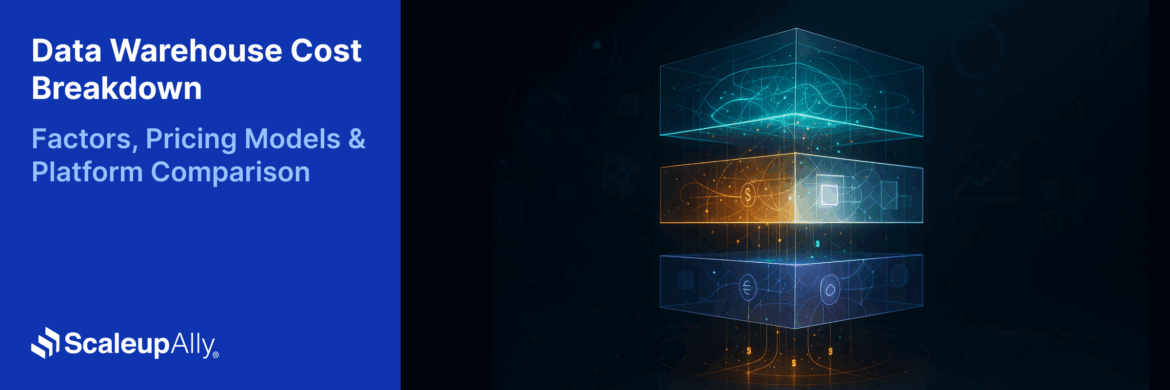
Data Warehouse Cost Breakdown: Factors, Pricing Models & Platform Comparison
Discover how much a data warehouse costs in 2025. Explore pricing models, key factors, and platform comparisons to plan your data budget effectively.
Tarsem Singh
Nov 6 ,
14 min read
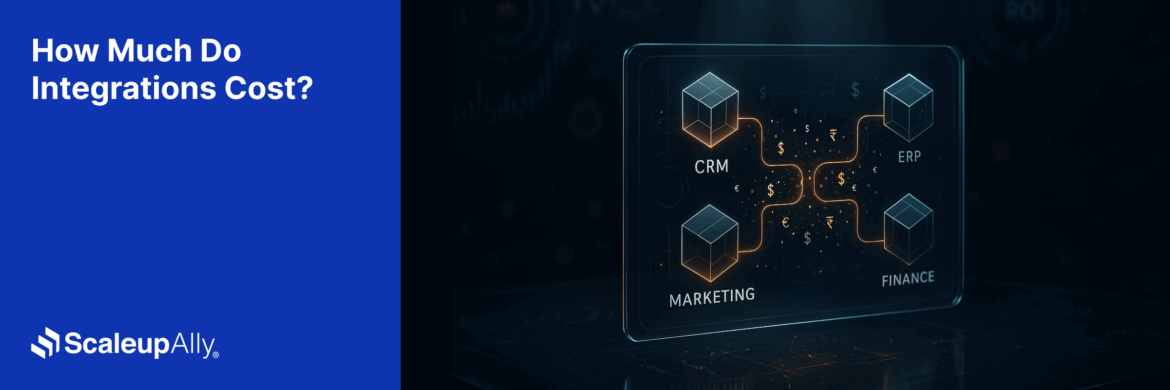
How Much Do Integrations Cost? [Pricing Breakdown & Key Insights]
Learn how much integrations cost, key factors influencing pricing, hidden expenses to avoid, and effective ways to reduce integration costs.
Tarsem Singh
Nov 6 ,
9 min read
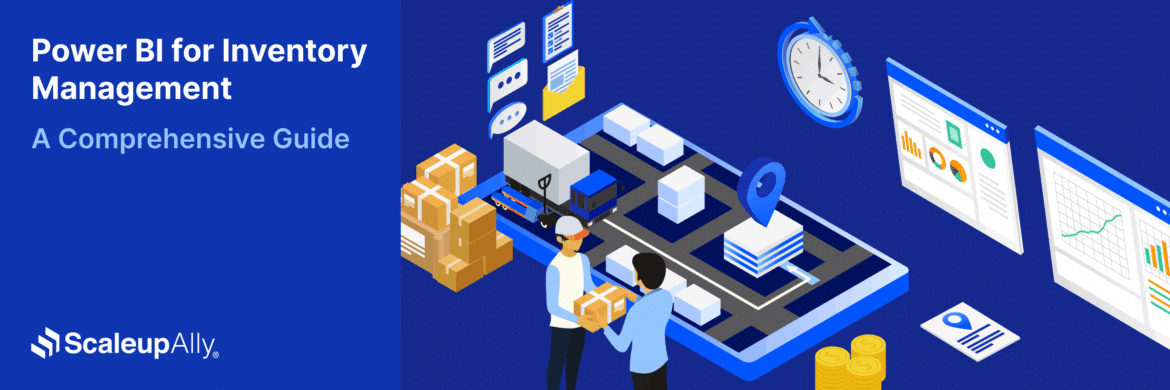
Power BI for Inventory Management: A Comprehensive Guide
Explore the hidden power of Power BI for inventory management and how it provides businesses with powerful analytics and visualization capabilities.
Tarsem Singh
Oct 8 ,
19 min read
